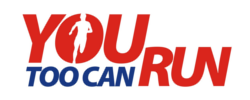Sweat Rate Study
Statistical analysis:
Normal distribution of the data was confirmed using the Kolmogorov-Smirnov test. Data are presented as mean ± standard deviation. Pearson’s correlation coefficient was used to determine correlation for parameters with normal distribution whereas Spearman’s correlation was used to determined correlation for parameters with non-normal distribution. A multiple regression analysis was performed to determine which factors were significant affected sweat rate among the runners. A p value <0.005 was considered to be significant.
Results
All data regarding demography and running history are summarised in Table. 1. The average on-field temperature and humidity during the run were 27.2° C (range, 25°-29.2° C ) and 70% (range, 48%-81%) respectively. The mean distance run was 9.3±3 km at a mean pace of 6.4±2.1 km/hr. The mean sweat rate was 1.4±0.4 l at 1 hour which was body mass loss of approximately 1.9 % (for mean body weight of 71.6 kgs before start of the run). Multivariate analysis showed that temperature, BMI and male gender were the factors which were significantly associated with the mean sweat rate.
Discussion
Much of the data available in the literature regarding sweat rate are for well-trained competitive athletes and literature is lacking on the sweat rate among amateur, non-elite marathon runners. To the best of our knowledge, the current study is the largest of its kind which aimed to determine sweat rates in non-elite marathon runners and the factors affecting those rates. The main findings of the current study was that the mean sweat rate among non-elite runners was 1.3±0.6 l per hour and factors which significantly affected the sweat rate in an individual were atmospheric temperature, the distance run and male gender.

Leave a Reply